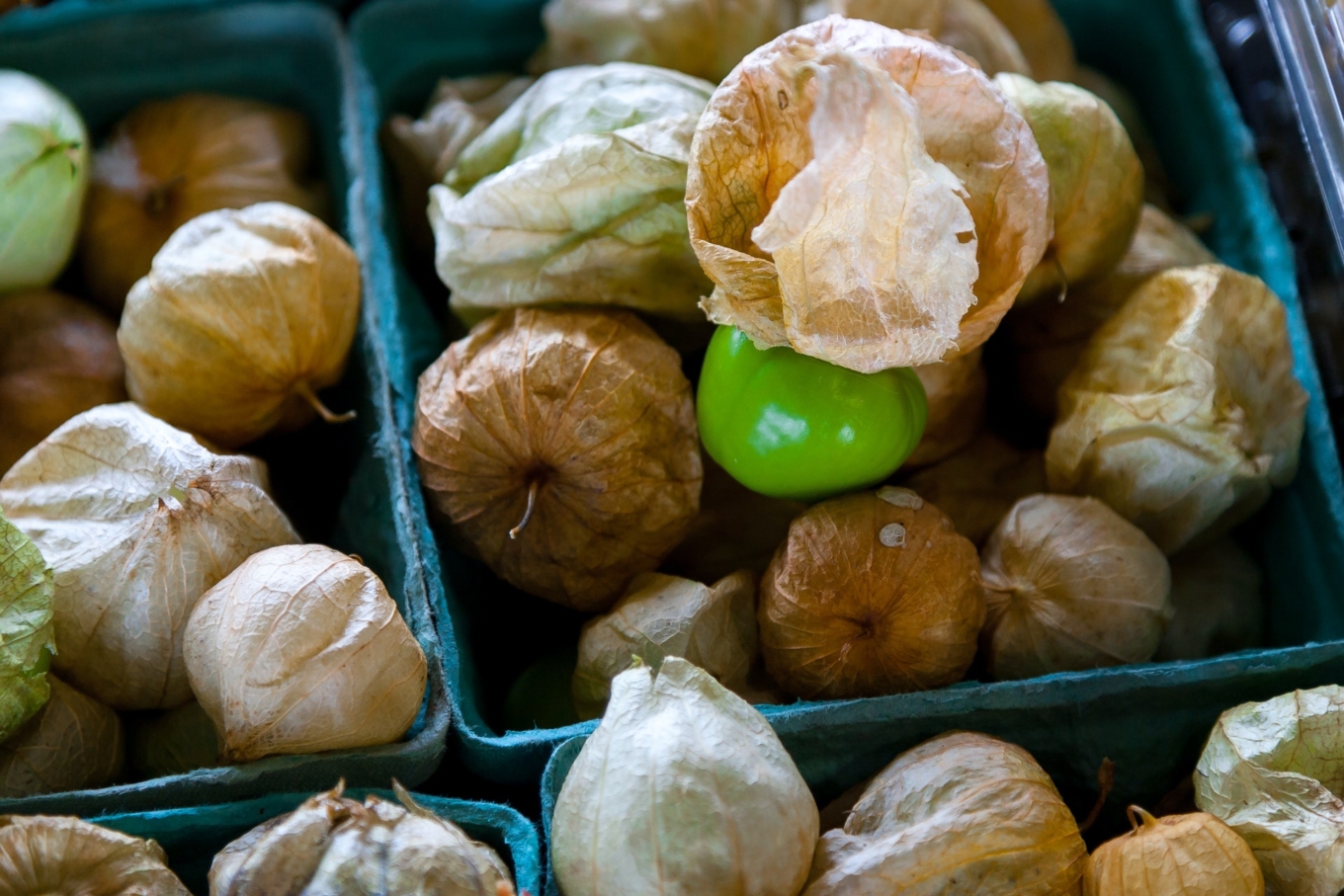The name tomatillo translates to “little tomato”, but these are not just green tomatoes. While they are both nightshades, the tomatillo is actually from a different plant and is slightly more acidic and less watery than the tomato. Evidence points to tomatillo’s use in cultures as far back as the Maya and Aztecs. Today, these husk covered fruits are a staple of Central American cuisine in dishes such as braised meats, salsas, as well as pureed into stews. They can be eaten raw, but are more often slow cooked or roasted to enhance their flavor. Tomatillos are typically grown in the warmer months and usually harvested in late summer or early fall. Look for tomatillos in your local grocery store or latino market.
Flavor and Texture of Tomatillos
Tomatillos are sure to brighten up any dish with their citrusy flavor and acidity. Don’t let the color fool you as tomatillos are ready to go when they’re green and pack the most flavor before they reach peak ripeness. When picking some up at the store for your next batch of salsa, go for firm and unbruised tomatillos with the husk still attached.
Storage and Usage of Tomatillos

Keep your tomatillos fresh and ready to use for up to a week by storing them in a cool, dark spot such as in the refrigerator with the outer husk still attached. But once it’s time to let these green beauties shine, remove the husk and rinse under cool water. Let dry and prepare as desired.
Introduce yourself to the tastiness of tomatillos by using them in a braising liquid, like in our Tomatillo Braised Beef Short Ribs or Chicken Tinga Tacos. For a light lunch, give our Cod Pozole a try which mixes pureed tomatillos into the broth for a zesty stew. Keep your meal meat-free with our Vegetable Enchiladas that uses tomatillo salsa in the filling as well as a sauce to top it all off.
Feature Image: Mark Stebnicki from Pexels



